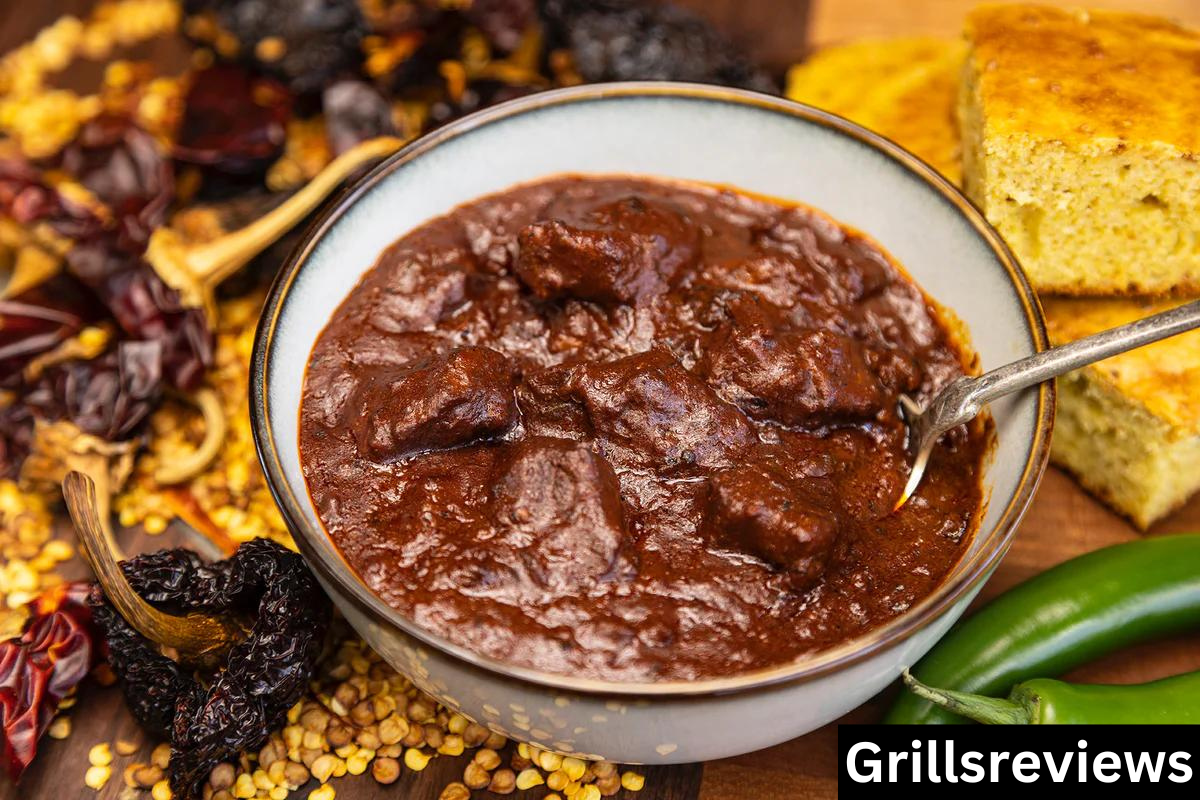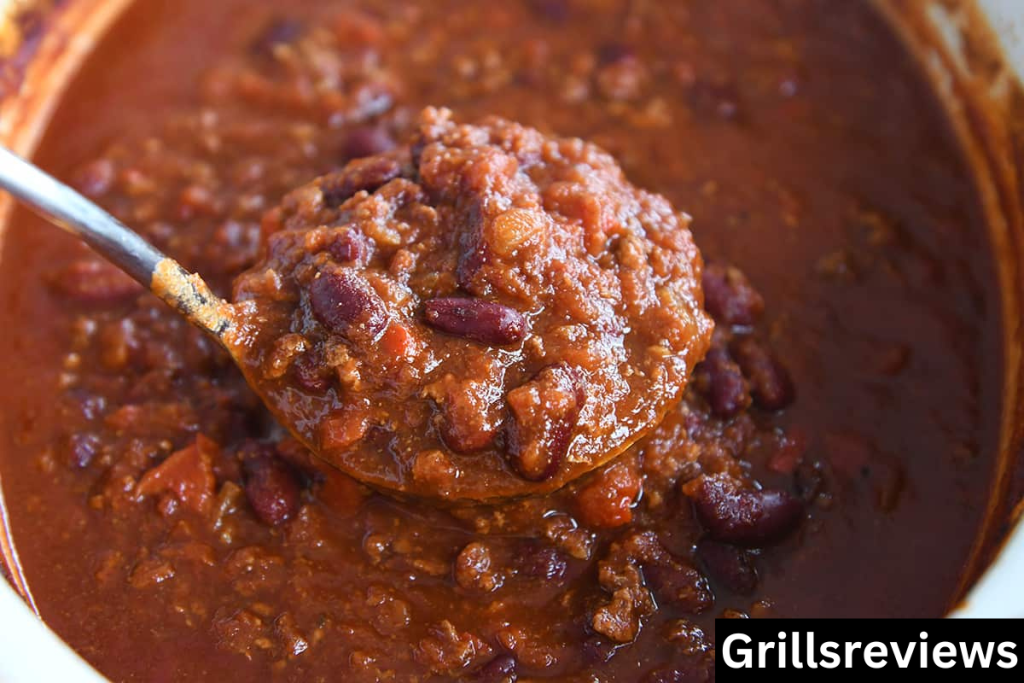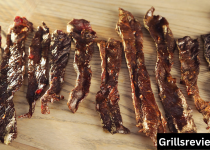How Long Does Chili Last in the Fridge (Solved 2023)

Do you know! How long does chili last in the fridge? Well, that’s what this article is here to inform you of, so make sure you read it all the way through.
What Is Chili?

Beans, tomatoes, and meat (often beef) are frequently found in stews and sauces like chili. It may be used in tacos or eaten over rice. Chili frequently contains other seasonings such as cumin, oregano, garlic powder, onion powder, and chili powder. Chili is a well-liked food for family dinners, potlucks, and game days since it is filling and tasty.
How is chili prepared?
Typically, beans, tomatoes, and beef are used to make chili. Until the required consistency is reached, the ingredients are cooked together in a saucepan or slow cooker.
To improve flavor, additional spices can be used, including cumin, oregano, garlic powder, onion powder, and chili powder.
Chili has to be properly preserved in the refrigerator in an airtight container within two hours of cooking. As a result, chili will stay fresh for up to four days.
How Long Does Chili Last in the Fridge?
Chili can often be kept in the refrigerator for three to four days when stored correctly. Since dangerous germs can develop for up to two hours after cooking or buying chili from a restaurant, it is crucial to preserve chili as soon as possible following either event.
The chili should be moved from the pot or container it was cooked in into an airtight storage container to guarantee optimum freshness. Chili must be kept in the refrigerator’s coldest area, which is regularly towards the rear, towards the bottom shelf.
Chili may be safely reheated and eaten after being properly preserved for up to four days. Chili should be thrown out if it has been kept for more than four days because germs may have grown there.
Is It Good To Keep Your Chili in the Fridge?
Where else would you want to have it, then? If you have a cool room, the fridge is the best location to store your bowl or bucket of chili. Your bowl of chili needs the temperature ranges that a refrigerator can maintain to be fresh and germ-free.
Due to the temperature inside your refrigerator, the majority of bacteria and other microorganisms that are the scourge of your food cannot thrive there.
If you had stored your chili somewhere else, like on the kitchen counter, you might wake up one morning and find it covered with a slimy spread of mold. This is a result of bacteria acting in the enabling environment provided by room temperature.
Some Advice To Increase Your Chili’s Shelf Life

Chili has a maximum shelf life, beyond which it will start to lose its freshness and flavor. Some requirements must be met for the chili to perform to its fullest extent in terms of maximum shelf life. Here are a few examples of these circumstances:
After heating, the chili needs to sit for two hours before being refrigerated. This permits the chili to stay fresh and is a cooling-off time at room temperature. Taking it straight from the stove to the refrigerator would cause the fridge to warm up fast, disrupting the fridge’s delicate balance of temperature.
Before placing the chili in the refrigerator, it should first be kept in an airtight container. This prevents any undesired growth or the admission of foreign material into the container by closing the door.
Utilizing little shallow pots to hold the chili is another method. On the basis of the link between temperature gradient and volume, this helps to promote speedier cooling.
Finally, make an effort to decant the chili before putting it in the refrigerator. The solid condition of the chili will make it less vulnerable to invasion from microorganisms within the refrigerator; however, this is not a very important element in deciding whether it will last or not.
Can Chili Get Stale?
Chili may spoil; however, it depends on how it is kept fresh throughout storage and preservation. The main factors are the method of storage and the amount of time between the previous heating and the refrigeration.
If you don’t put it in the fridge within two hours after taking it from the burner or microwave, it will be more likely to spoil.
This is due to the fact that temperatures between 40 °F and 140 °F favor microbial development. Only a refrigerator or a location with a history of experiencing low temperatures can maintain this temperature.
Most likely, the temperature in your kitchen or any other location is below this threshold and cannot retain the chili’s freshness over the long term.
So your chili will be vulnerable to microbial assault if you can’t find a sustaining temperature. You must pay close attention to the storage requirements of your chili, since mold and bacterial development are constantly on the hunt for exposed food, especially one with meat.
Your chili will become moldy as a result of such an attack, which is an ugly and unintended result.
How to Tell When It’s Gone Bad

Food poisoning and illness can result from poor chili. Always look for symptoms of deterioration in your chili before eating it to prevent this.
Even if the chili has less than 3–4 days in the refrigerator or 6–12 months in the freezer, you still need to do this.
Here are a few easy methods to determine whether chili is bad:
Bad smell
White or green mold spots
Texture changes
Bad taste
Additionally, it’s important to remember that just because chili doesn’t taste or smell terrible after the suggested shelf life doesn’t imply it’s okay to consume.
It’s possible that foodborne illness-causing bacteria don’t always alter the flavor and aroma of a meal. It’s advisable to discard food if it has been sitting out for too long.
What Might Occur If You Eat Old Chili?
Eating chili that has been improperly kept or left out for an extended period of time may result in food poisoning. Food poisoning signs and symptoms include nausea, vomiting, cramping in the abdomen, and diarrhea.
Any chili that appears or smells off should be thrown away, since these are indications of deterioration. Before cooking chili, make sure the components are always fresh.
How To Defrost Chili
Chili can be quickly and easily defrosted using a variety of techniques. Place the frozen chili container in a basin of cold water and let it gradually thaw for the quickest results. If you’re pressed for time, you can simply defrost the chili in the microwave. Before serving, reheat the chili to 165 °F once it has thawed in a saucepan or container.
The Takeaway
When you need something to keep you warm on chilly evenings, chili is as comfortable as they come.
You can take the required steps to make sure what you’re eating is always healthy and delicious by knowing how to store it in the fridge and how long it should be kept there.
FAQs: Chili
Can you eat leftover chili after 7 days?
Chili that hasn’t been frozen loses its safety after seven days. Make sure your leftovers are carefully stored in either a refrigerator or freezer, devoid of any dairy or meat products, for up to six months for the freshest flavor and longest shelf life!
Is week-old chili good?
The good news is that, if maintained in an airtight container, chili chowder may last up to a week if you’re debating whether to keep it. One of the most well-known recipes we are familiar with today is this hot stew prepared with meat, tomatoes, and beans.
How many times is it safe to reheat chili?
It’s normal to reheat home-made leftovers, but it’s preferable to avoid doing it too frequently. The flavor or texture of individuals who prefer prepared meals might be impacted by frequently reheating them, which is not essential.
When should you throw chili away?
Chili needs to be consumed within four days of refrigeration in order to maintain top quality and food safety. However, it’s advisable to discard the dish if it’s been left out at room temperature for longer than two hours because nobody likes to eat bad food.
Why is leftover chili better?
Who wouldn’t enjoy a meal that improves in flavor over time? The nicest part of making chili or curry is often the leftovers because the flavors combine to produce an even more flavorful and complex flavor. You’ll want to keep your leftovers around as a consequence!
How do you store leftover chili?
If you want to securely store leftover chili, keep the containers shallow—no deeper than two to three inches. When you’re ready for more, reheat the chow-chilli in the oven, microwave, or on the hob until the center registers 165 degrees Fahrenheit.
Related Posts

How Long Can Ham Sit Out (And Can You Eat It?)

Smoked Beef Jerky in Easy Steps (Huge Flavor)
